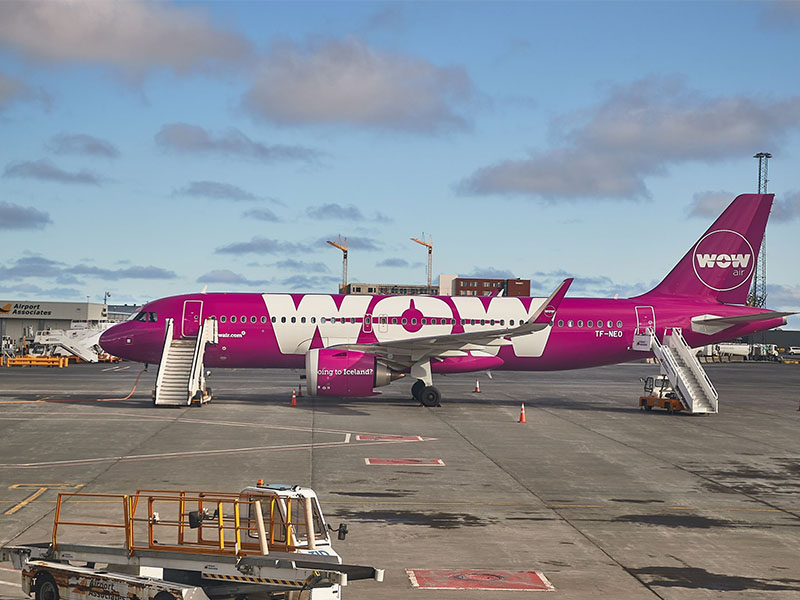
Icelandic discount airline WOW air hf. filed for bankruptcy on March 28 — just weeks before the start of the transatlantic tourist rush.
What the WOW flop and others have in common is that they did not make enough money to cover costs. Why they did not is the key.
Low ticket prices are a large part of the problem. WOW charged US$70 to fly one way from Chicago to Iceland’s hub in Reykjavik. Starting in San Francisco added US$20 to the tab. It’s unclear whether an airline can survive with such low fares, even flying full. Load factor, which is the ratio of seats occupied to all seats for an airline’s routes, is only part of the story. Fuel prices and credit availability are also big issues.
In addition to those elements, airlines live or die by financing costs, operational efficiency, leasing rates, labour costs and the all-important load factor, says an analyst at bond rater DBRS Limited in Toronto. When oil prices rise alongside interest rates, which reflect lenders’ evaluation of the company’s business, it is harder for the airline to stay solvent.
A review of 208 failures of U.S. air carriers in the period from April 18, 1979, when helicopter operator New York Airways flopped, to Dec. 13, 2018, when business jet specialist OneJet shuttered, shows that bankruptcies spike when credit conditions are difficult and oil prices are high. Thus, airline insolvencies soared in 1982 when U.S. bond rates, depending on class and maturity, reached the mid-teens, and again in 2008 when credit markets seized up and loans were called and not renewed. In 1982, oil prices averaged about US$85 per barrel, and in 2008, they averaged US$100 per barrel.
In the case of WOW, explains Mar Wolfgang Mixa, assistant professor of business at Iceland’s Reykjavik University, “it was just one airline that failed. There was a combination of the rising cost of fuel, and ambitious plans to fly to India and Los Angeles. They stretched themselves too far. A canary in the proverbial coal mine it was not. It was one airline and one failure.”
Still, this insolvency raises the question of whether low-cost carriers can compete over the Atlantic and still make money, says Jan. K. Brueckner, professor of economics at the University of California at Irvine and a specialist in airline economics.
“There were two discount carriers specializing in flying over the Atlantic: Norwegian Airlines and WOW,” Brueckner says. “WOW was less attractive than Norwegian because of the need to connect to ongoing flights to Europe via WOW’s Iceland hub. The trigger [for bankruptcy] may have been the recent rise in fuel prices, but the fundamental problem was that they were not covering costs.”
There are other causes, Brueckner adds. During the Great Recession, business and leisure travel were both depressed. U.S. airline bankruptcies, which are better tracked than global airline insolvencies, soared from two in 2007 to 13 in 2008.
WOW itself attributes its failure to hubris. As reported in a Financial Times article published March 29, the airline was already servicing North America and Europe but wanted to add 15 destinations in Asia. It had also ordered widebody planes. WOW’s CEO, Skuli Morgensen, told the FT that the decision to expand globally was “fatal,” adding, “We still had too much debt on our balance sheet and, given a very challenging airline environment at the moment, we didn’t have the time to secure the funding needed.”
The large number of airline flops raises the question of how operators can make money in a highly competitive environment. Airlines make their profits on business class and first-class passengers, while cheap fare passengers chip in for fuel and landing fees. Costs rise when a carrier, such as WOW, uses a hub and spoke system, because it has to generate even more traffic to fill planes.
For passengers, the choice of routing and service became a balance of the flying experience vs the price. As the Federal Reserve Bank of St. Louis noted in a Nov. 2018 report on airline economics, airline survival is increasingly about seat price and less about comfort. The question for small and financially marginal carriers is not if they may fail, but when. WOW, established in Nov. 2011, had a good run. If it can get new backers, temper its ambitions and demonstrate a plan for profitability, it could fly again. Hope, it would seem, is the fuel of airline launches.
Editor’s note: A previous version of this article indicated, incorrectly, that Indigo Partners made a significant investment in WOW shortly before the airline’s collapse. Indigo made no such investment.